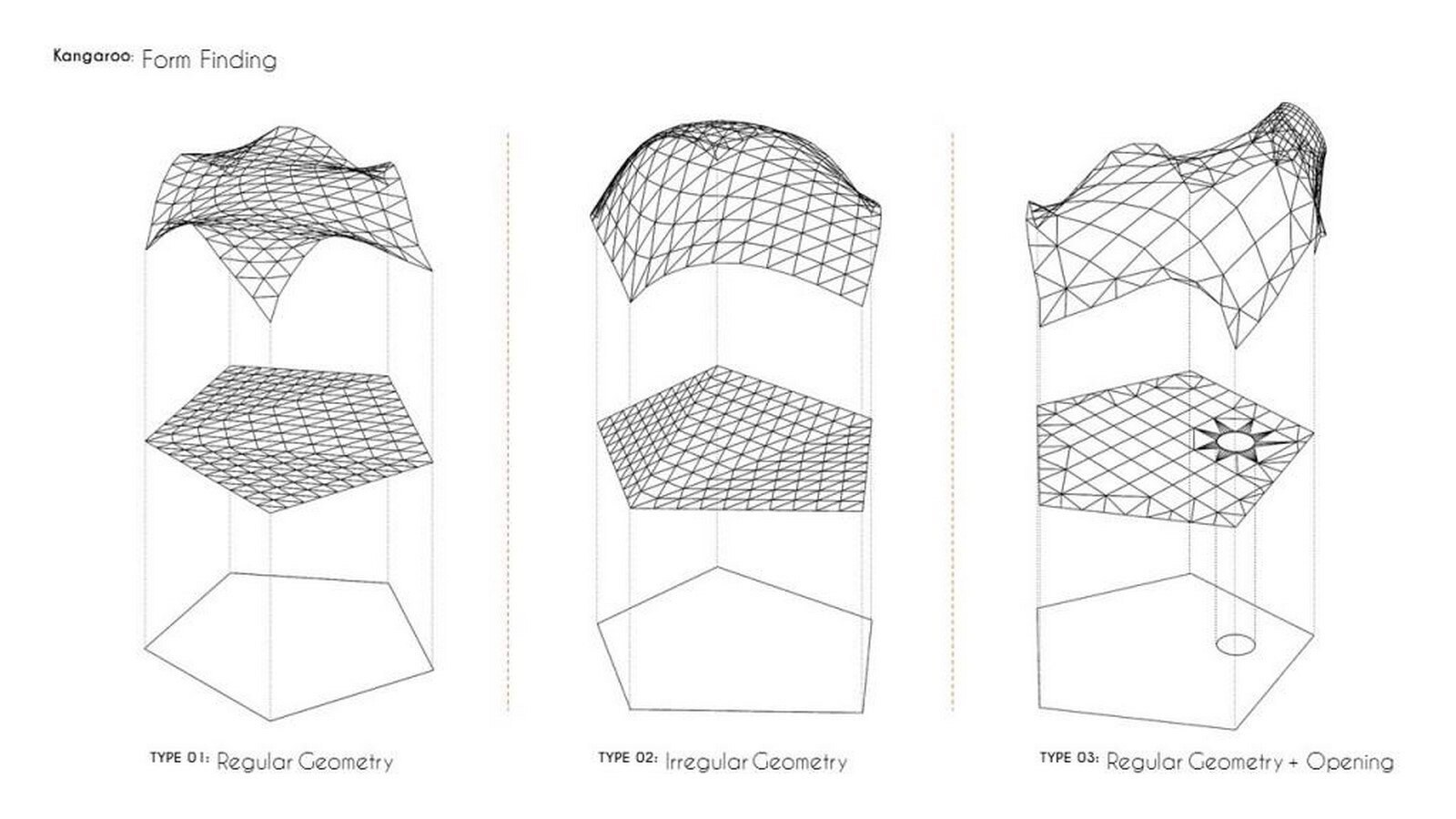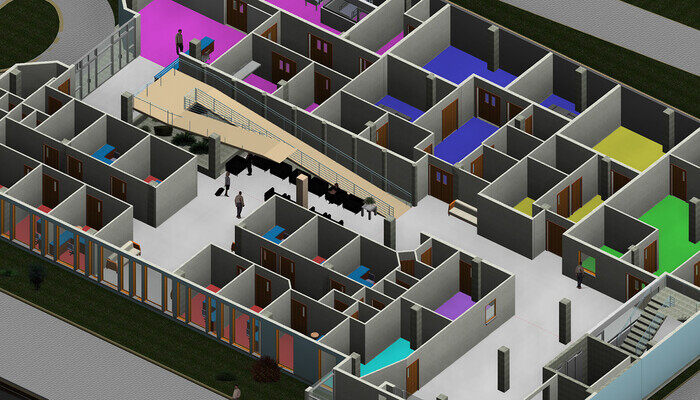Top 5 Architectural Design Courses To Get High-Paying Jobs After Graduation

Table of Contents
Aspiring architects often contend for positions in esteemed firms that demand creativity, technical proficiency, and a keen understanding of industry trends. With an increasing number of qualified individuals graduating from architecture programs, making a mark in this competitive industry requires unique skills. One such skill that has gained popularity in recent years is Computational Design.
Architectural firms recognise the value of professionals who can leverage the power of computational tools, machine learning, algorithms, and data-driven processes to generate efficient designs. This skill enables architects to tackle complex projects with precision, make data-informed decisions, and create sustainable structures. They become valuable assets and can secure high-paying positions in prestigious architectural firms.
What is Computational Design? 
Computational Design is a transformative method of using algorithms and parameters to streamline design workflows and generate multiple design solutions. Parametric design is a subset of Computational Design, and generative design is the process that generates the designs as per the parameters. Computational Design helps architects work on complex geometries, optimises performances, helps conduct environmental and structural analysis and formulates customised solutions. Unlike traditional drafting, you need to set up parameters and constraints to generate designs, making iterations easy and effective.
Also check out: How Is Computational Design Used in Architecture in 2024?
Benefits of Computational Design for Architects 
Computational Design is a streamlined process that helps architects become future-ready and relevant. It empowers architects, enabling them to use powerful programming tools in every step of the design process, from conceptualising and creating to presenting, evaluating, and executing. Let’s look at the key benefits that position architects at the forefront of innovation.
1. Iterative Process
Computational Design allows architects to test and analyse multiple design iterations as opposed to traditional designing, where you can only work on one design at a time. Doing so lets you explore various design possibilities and identify the one that best suits your requirements.
2. Navigates Complex Geometry
Through Computational Design, architects can handle complex geometries that are otherwise quite challenging to work with manually. Architects can leverage computational tools to expand their potential, creating intricate designs and developing architectural designs efficiently.
3. Design Precision
Computational Design uses algorithms and parametric modelling, enabling architects to control various design factors according to their goals, resulting in precise outcomes. This capability guarantees no discrepancies, ensuring minimal deviation between the conceptual stage and the final executed designs.
4. Informed Decision Making
Computational Design tools simplify data-driven designs by simulating and analysing the environmental impact of designs. They consider factors like sunlight, wind, and thermal comfort and formulate energy-efficient designs that help minimise the overall carbon footprint. Architects can thus make data-informed decisions and generate sustainable, functional and visually pleasing designs
5. Flexible and Customisable Designs
Architects can develop customisable designs responding to the parameters and the contextual factors that you set using Computational Design tools. This flexibility allows architects to explore design iterations while keeping the client's needs intact, thereby improving the overall design process.
6. Saves Cost and Time
Architects can detect potential errors and resolve them before the construction process starts with computational tools. This not only minimises the time and cost of unending revisions and last-minute mishaps but also saves the effort that you put in during the design process. Using this approach, you can streamline your budget and speed up your project timelines.
7. Improves Building Performance
Architects can precisely work out the structural grid, HVAC (Heating, Ventilation, and Air Conditioning) systems and acoustical requirements with various simulations. This proactive approach can reduce the need for adjustments after the construction phase, ensuring comfortable and functional spaces for the users.
8. Construction Planning
By using computational modelling, architects can improve efficiency in terms of resource allocation, scheduling and coordination during the construction stage. This can help in streamlining the process and achieving your target without untimely delays.
9. Effective Project Management
Through Computational Design, architects can share the models with team members, stakeholders and clients in real-time, enabling better design making. This process ensures that all members are in the loop and well-informed about every stage, minimising misunderstandings regarding the project execution.
Also check out: Famous Architecture Firms Making Use of Computational Design (2024)
Top 5 Computation Design Courses to Get High-Paying Jobs
The knowledge of upcoming architectural design courses like coding, management, sustainable design, automation, and Computational Design has become a must-have for architects who want to remain relevant, future-ready, and keep pace with technical advancements. Top architectural firms like Bjarke Ingels Group, Ant Studio, Nudes Architecture, Big Architects, and Gehry Partners are actively seeking architects who are trained in new-age skills, including Computational Design.
If you’re looking for high-paying jobs, Computational Design is one such skill that can change your narrative and increase your earning potential. We have curated a list of Computational Design courses that you can consider. Please note that any of the courses don’t specifically focus on parametric design or generative design because these are all verticals of Computational Design.
1. Master Computational Design Course for Real-World Application by Novatr
Duration: 10 months
Mode: Online
Fee: INR 3,45,000
Certification: Yes
Computational Design courses are traditionally offered as a master’s program for architects and demand a major financial investment. Therefore, Novatr designed a comprehensive online course to make it accessible for students and young professionals, priced at one-tenth of a master’s program. The course curriculum is led by industry experts with extensive experience and covers subjects including parametric modelling, generative design, BIM and sustainability. The course teaches 5+ software and 15+ plug-ins, enabling architects to create streamlined and optimised design solutions.
It is a cohort-based Computational Design architecture course that offers live sessions and one-on-one interactions, making the learning process more conducive and impactful. By the end of the course, architects need to take on a capstone project under the guidance of mentors to implement their learnings. The best part is that Novatr also provides placement support.
2. Master in Advanced Computation for Architecture & Design by IAAC (H3)
Duration: 10 months
Mode: Online
Fee: INR 10,94,230
Certification: Yes
The Computational Design master’s degree from the Institute of Advanced Architecture of Catalonia (IAAC) is an exceptional course that offers an online program in synchronous and asynchronous format. The course curriculum offers a theoretical and practical understanding of generative and parametric design through simulation, analysis, and optimisation.
The comprehensive computational course is divided into three modules along the 10-month learning period on environmental and structural design, BIM and smart construction, and artificial intelligence in architecture. Each module needs to be studied and applied independently. After completing the modules, you need to work on a thesis project before getting the certificate. Apart from recorded lectures, the course offers live mentoring group sessions, online forums and chat rooms for feedback and doubts.
3. Master of Science in Computational & Advanced Design by DesignMorphine
Duration: Nine months
Mode: Online
Fee: INR 10,67,000
Certification: Yes
DesignMorphine is a one-of-a-kind online educational institution that offers a master’s degree in Computational Design. The course curriculum is broken down into five technical and theoretical labs. It introduces you to the basics of computational and generative design and slowly progresses towards creating and optimising complex architectural projects.
The learners get to explore and experiment with various computational tools through simulations and advanced visualisations that empower them to push their boundaries towards innovation. They master software like Rhinoceros and Maya and learn how to use virtual reality and prototyping machines. Students are expected to present their work to a design jury at the end of every month, which simultaneously prepares them for the real world. The nine-month course is accredited by the University of Architecture, Civil Engineering, and Geodesy in Sofia, Bulgaria.
4. Sustainability Through Computational Design by Rethinking Architecture
Duration: 10 sessions
Mode: Online
Fee: INR 8500
Certification: Yes
Sustainability through Computational Design is a unique course that offers a dynamic learning experience. The course teaches you to develop a sustainable mindset by leveraging algorithms and automation tools. It introduces you to the concepts of building science, climate data, and environmental considerations through simulations and analysis. It helps you develop proficiency in sustainable design using computational tools like Grasshopper and Ladybug. The curriculum provides knowledge and tools for designing energy-efficient buildings that meet green building standards like LEED and GRIHA.
The course is packed with live lectures, hands-on demonstrations, assignments, collaborative group activities, and feedback sessions. End your journey with a capstone project - a group activity that enables you to apply your skills and learnings and contribute to a more sustainable future.
5. Introduction to Computational Design by Harvard University
Duration: 8 weeks
Mode: Online
Fee: Not Mentioned
Certification: Yes
This Computational Design course, offered by Harvard University, is ideal for busy individuals who want to learn without the burden of long-term commitments. It covers everything you need to know, essentially focusing on architecture, landscape, and urban design. The course curriculum teaches computational algorithms, tools, and the fundamental principles of an iterative design process.
It includes lectures, assignments, and hands-on workshops and is packed with insights that you can implement in real-world projects. Join this course to learn about digital tools and workflows that streamline your design and construction process. While having a basic understanding of Grasshopper is preferred, anyone interested can enrol.
Final Thoughts
As the AEC (Architecture, Engineering, and Construction) industry continues to evolve, embracing advanced architectural design courses like Computational Design is a strategic move and can open new doors for your career. By upskilling, you can not only land high-paying jobs but also pave the way for leadership roles where you can make a significant impact on society. Before choosing a course, carefully evaluate the offerings, finances, duration, and curriculum and select the one that fits your criteria.
With these cohort-based courses, you can learn now learn Computational Design courses from the comfort of your home instead of pursuing an on-campus master’s program. Courses like Novatr’s demonstrate that you don’t necessarily need to pursue a master’s degree to become an expert in Computational Design.
If you’re looking for a computational design course, explore the Computational Design Course for Real-World Application offered by Novatr. Learn 5+ software and 15+ plugins with their real-world application and prepare to take your career to the next level. Head to our Resources Page to get more insights on the importance of Computational Design and why you need to learn it.
Also check out: 8 Best Places to Learn Computational Design (2024)

 Thanks for connecting!
Thanks for connecting!
.jpg)
%20(1).png)
%20(1).png?width=767&height=384&name=MCD%20B%20(Intro%20card)%20(1).png)
%20(1).png?width=767&height=168&name=MCD%20B%20(Course%20Banner)%20(1).png)
.png)








